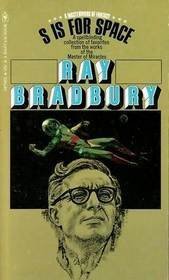
The October Country
Book Description
Step into a world where shadows whisper secrets and the bizarre collides with the everyday. In 'The October Country,' Ray Bradbury weaves a haunting tapestry of tales, each more chilling than the last. From chilling encounters with ghosts to the unsettling truths hiding within human hearts, every story probes the darker aspects of existence. Lives unravel in peculiar ways, as dreams twist into nightmares and reality blurs with the surreal. Can love endure when faced with the unknown? Amidst the autumn chill, what truths lie in the secrets of the night? Prepare for a journey through a landscape of fear and wonder.
Quick Book Summary
"The October Country" by Ray Bradbury is a masterful collection of short stories that explores the eerie and unsettling dimensions of life and death. Seeped in autumnal gloom and tinged with the supernatural, the stories traverse the delicate boundary between the mundane and the macabre. Bradbury deftly interweaves elements of horror, fantasy, and suspense, highlighting the strangeness lurking beneath daily existence. Each tale presents characters confronting fears, obsessions, and longings, often confronting the unknown or unraveling under the weight of their own anxieties. Themes of mortality, isolation, and the uncanny abound as the stories reveal both the darkness of the world and the resilience of the human spirit. In this quintessentially Bradburyan landscape, horror coexists with beauty, inviting readers into a chilling yet poetic October realm.
Summary of Key Ideas
Table of Contents
The Supernatural in Everyday Life
The collection opens readers to a world where the supernatural is never far from the surface of ordinary life. Bradbury populates small towns and familiar locales with whispers of the fantastical—a man haunted by his own skeleton or a family living with a room that reflects their darkest fears. Everyday objects and settings become conduits for chilling encounters, blurring the line between reality and nightmare. By grounding the bizarre in the daily routine, Bradbury makes the macabre feel unsettlingly possible, encouraging readers to question what lies beneath the veneer of normalcy.
Fear of Mortality and the Unknown
Confrontations with mortality serve as a throughline in many stories. Characters are stalked by death, whether literally, as in the tale of a carnival shadow with a life of its own, or metaphorically, as individuals face the end of youth or the slow decay of the body. Bradbury examines how people internalize their terror of the unknown by projecting it onto supernatural figures or strange occurrences. The stories confront the inevitability of death, suggesting that our deepest fears often spring from our attempts to wrestle with impermanence.
Alienation and Human Isolation
Another dominant motif is alienation and the sense of being an outsider. Bradbury’s protagonists are often isolated, misunderstood, or emotionally estranged from those around them. Some, like the lonely man who befriends a living skeleton, are haunted by their own bodies; others are ostracized for their differences. This pervasive sense of separation sets the stage for the characters' vulnerability to external and internal horrors. Bradbury portrays this isolation as both cause and consequence of their uncanny experiences.
Transformation and the Uncanny
Transformation and the uncanny are woven throughout the collection. Characters undergo terrifying metamorphoses: a child’s journey into adulthood becomes a chilling allegory, while another tale sees the madness of obsession morphing a person into something monstrous. The stories question how much of our identity is fixed and how easily it can be reshaped by fear, desire, or the supernatural. In Bradbury’s October country, transformations rarely bring solace; instead, they unmask the uncertainties and dangers at the heart of existence.
Imagination as Both Escape and Threat
Ultimately, Bradbury probes the double-edged nature of imagination. Imagination opens doorways to wonder and beauty, yet, in these tales, it also becomes a gateway to terror. The characters' capacities to dream and fear often entrap them as much as they empower. Bradbury balances horror with lyricism, suggesting that both the light and the dark within the human psyche are capable of extraordinary creation and destruction. Such dualities make "The October Country" a haunting meditation on the mysteries beneath the surface of everyday life.
Download This Summary
Get a free PDF of this summary instantly — no email required.





